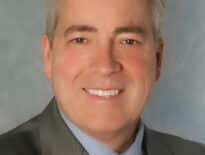
The COVID-19 pandemic has upended the traditional power balance between employers and employees, and what those workers want out of a job.
While concerns about maintaining a work-life balance existed before the pandemic, the past two years have found even companies that had long prioritized employee wellness still had to adjust to during the pandemic.
“Work-life balance is a really important part of our culture, and what’s interesting to me is the way that the work-life balance got shaken up,” said Edward Manzi Jr., CEO and chairman of Leominster-based Fidelity Bank. “We had to quickly evolve the way that we kept our work-life balance promise.”
With the pandemic triggering employees to reconsider their careers as part of the Great Resignation, banks like Fidelity Bank and Cambridge Savings Bank have continued to focus on work-life balance for employees.
Employees’ Priorities Changed
Even before the pandemic, Cambridge Savings Bank had focused on improving work-life balance for employees, said Linda Grace, the bank’s chief human resources officer. About three years ago, the bank had moved non-branch staff into a single office in Waltham to facilitate face-to-face collaborations, Grace said, as well as to integrate work-life balance into employees’ day-to-day experiences. The office gave staff access to amenities like a gym, yoga studio, dentist and optometrist to help balance their needs during the workday.
“It was going great, and then – pandemic,” Grace said.
The stress, alienation from employers and career clarity produced by over a year living under the virus’ thumb sent employee resignations soaring across the economy. Over 4 million people have quit their jobs each month between July and November 2021 – the most recent data available – according to the federal Bureau of Labor Statistics. While finance and insurance have been spared quits rates like the 6.9 percent of accommodation and food service workers who left jobs in November of last year, federal data still shows 95,000 finance workers, or 1.4 percent of the national workforce, quit that month, and 113,000 left in September.
A recent survey conducted by Cleveland-based KeyBank found that the most frequently cited reasons for people to change jobs in recent months were retirement and leaving for a new role. The average age of those who left for a new role was 37.
“The pandemic has led many Americans to redefine personal and financial priorities and place greater emphasis on activities that will inspire a sense of health and wellbeing in both mind and wallet,” Mitch Kime, KeyBank’s head of consumer lending and payments, said in a statement about the KeyBank 2022 Financial Mobility Survey.
The study found that 62 percent of respondents considered work-life balance more important than a high-paying salary, while 22 percent prioritized the high-paying salary. But only 25 percent of the respondents said their standard of living had improved in 2021 compared to 2020.
Execs Focused on Feedback
Faced with this tougher, new labor market, executives turned to feedback they were getting from employees, said Katie Catlender, Cambridge Savings Bank’s chief customer officer. The bank was also proactive communicating with staff who might be considering a job change or have received other job offers to understand their needs, Grace said.
“All of that input has really been a part of getting comfortable with a very flexible environment where we’re really results focused but really care about making sure people feel supported and able to focus on both their life and their time with their CSB friends and colleagues,” Catlender said.
With remote work becoming the norm for many white-collar employees’ peers, Cambridge Savings executives decided to let each manager balance their teams’ need for in-person collaborations with flexible, hybrid schedules, Grace said.
The bank has also invested in resources to support workers’ mental health, Grace said, including a program called Modern Health that will give employees access to providers for support with their own needs or those of a partner or family member, beyond what’s available through traditional health insurance.
“We’re going to really work hard to try to reduce some of the stigmatism associated with acknowledging the fact that that you may need some support from us – stress, anxiety or other aspects of mental health,” she said.
Cambridge Savings Bank also decided to revise its strategic plan during the pandemic, Grace added, as the bank wanted employees to know that it recognized how the changing world would affect the bank’s approach to purpose of helping customers, colleagues and communities.
So far, the efforts may be working. Employee turnover hasn’t increased significantly, Grace said.
Recruits Focused on Value Proposition
But Cambridge Savings Bank has not escaped the effects of the Great Resignation, Grace said. The bank is facing challenges trying to recruit qualified candidates.
“We need to ensure that we’re offering a compelling value proposition to folks to get them interested in either rejoining the workforce or interested in sort of picking their heads up from where they’re currently working,” Grace said. “We certainly are seeing some challenges on that side of the equation.”
To make their company’s own value proposition clearer to prospective employees, Fidelity Bank is leaning on its values, said CEO Manzi. Research has shown job satisfaction comes from working somewhere that the employee thinks is doing something important or that makes them feel part of something good, he said.

Diane McLaughlin
Fidelity Bank for nearly two decades has had a framework called LifeDesign that defines how the bank approaches its mission. The word “care” is key to that framework, not just to describe the bank’s approach to clients, colleagues and communities, but also as an acronym for the process the bank uses in its approach: collect and connect, analyze, recommend and execute.
“[LifeDesign] is so deeply embedded in our culture, that it is absolutely critical to recruit and retain people,” Manzi said.
Manzi found that having LifeDesign as a foundation and the trust it builds among employees helped the bank adjust to the changing needs for work-life balance during the pandemic.
The bank’s turnover rate during the pandemic has been lower than the industry average, Manzi said, and the bank has recently recruited senior executives who said the bank’s philosophy resonated with them.
“When we say ‘caring,’ you could say it’s kind of hokey or whatever, but they see the actions that backed it up, that everyone caring for each other is pretty powerful,” Manzi said. “It’s a very challenging environment, but I am very grateful with the results we’ve had so far.”






